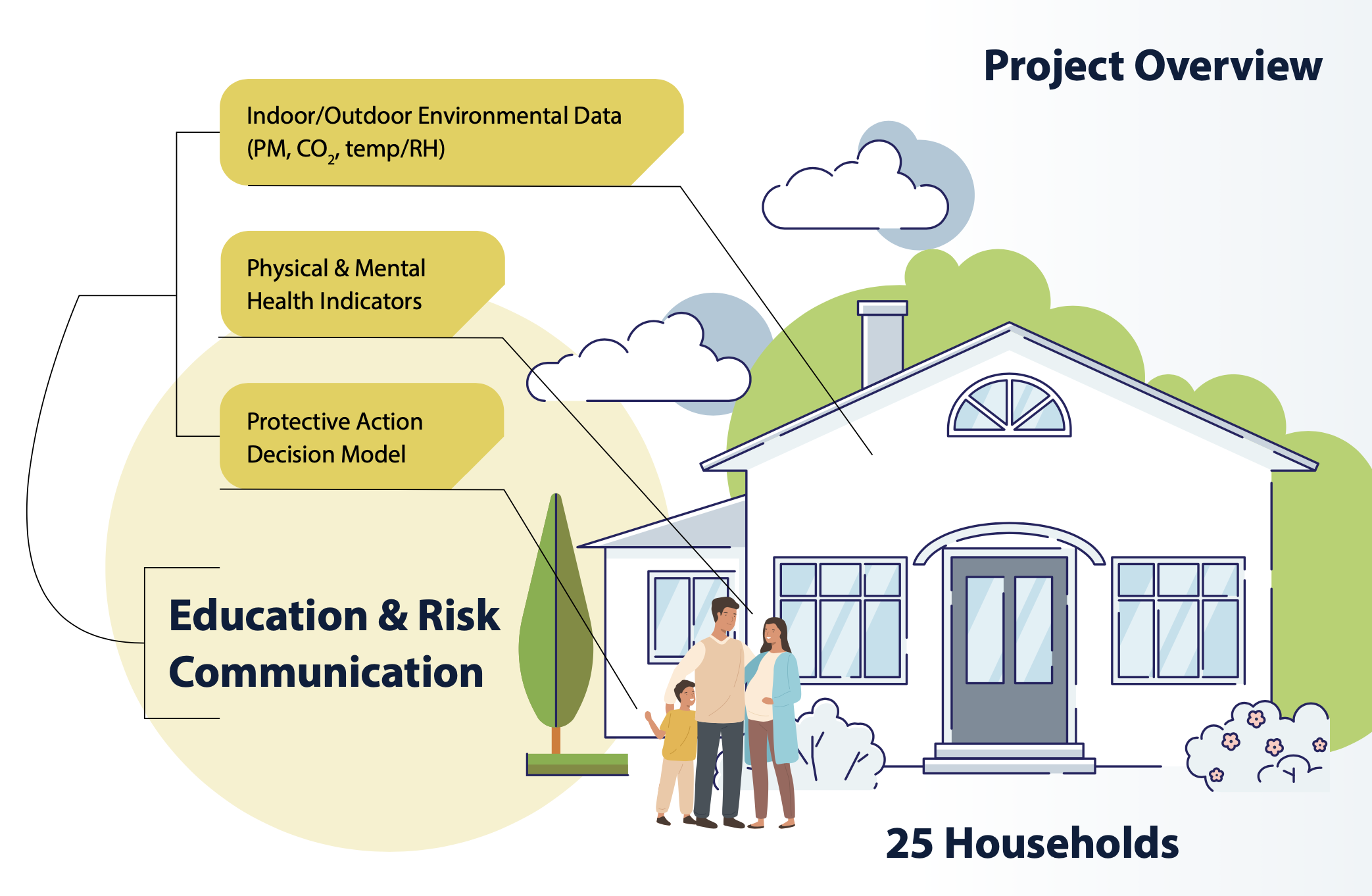SUPPORTING HOUSEHOLD HEALTH ADAPTATION
TO THE COMPOUND EVENTS OF EXTREME HEAT AND WILDFIRE SMOKE
Our mission is to increase opportunities for achieving optimal household health outcomes in northern Nevada related to the compound events of extreme heat and wildfire smoke.
Project Description: In the western US, when extreme heat and wildfire smoke occur simultaneously (i.e., as compound events), many households face serious challenges for mitigating vulnerability given lack of or financial inability to operate a central air-conditioning (AC) system, a primary tool for limiting exposure. This is the case for roughly 22% of households in Nevada. During compound events, unless these households evacuate, they must choose between minimizing heat exposure but increasing air pollution exposure (e.g., by opening windows/doors or operating evaporative coolers) or minimizing air pollution exposure but allowing heat to accumulate (i.e., indoor heat waves). Given the increasing frequency and intensity of both extreme heat and wildfire smoke events in the western US, there is a critical need to support health adaptation in vulnerable households.
PROJECT GOAL
The goal of this project is to support household health adaptation to the compound events of extreme heat and wildfire smoke in Washoe County, Nevada. During spring 2024, 18 households were recruited to participate in the project, including 15 without and three with Central AC. Between summer and fall 2024, indoor/outdoor environmental, physical and mental health, and protective action decision-making data were collected from those households during the occurrence of three distinct compound events, using the following instruments:
- Small, portable indoor/outdoor sensors (e.g., PM, CO2, temperature, humidity);
- Spirometer, pulse oximetry, and ECG/heart rate;
- Standardized stress test (perceived stress scale, PSS-14);
- Semi-structured interviews guided by the Protective Action Decision Model (PADM).

Baseline data will be collected during spring 2025 and summaries of individual household data will be returned to participants for discussion.
All data types will be correlated and analyzed in comparison to baseline data to understand the physical and mental health impacts and corresponding protective action decision-making associated with compound events. These analyses will be summarized both at the individual household and collective household levels and used to inform compound events education and risk communication materials for Washoe County Health District, the primary project partner.
MORE INFORMATION
Kristin VanderMolen, Ph.D
Kristin.VanderMolen@dri.edu
Yeongkwon Son, Ph.D
Yeongkwon.Son@dri.edu
Tamara Wall, Ph.D
Tamara.Wall@dri.edu
